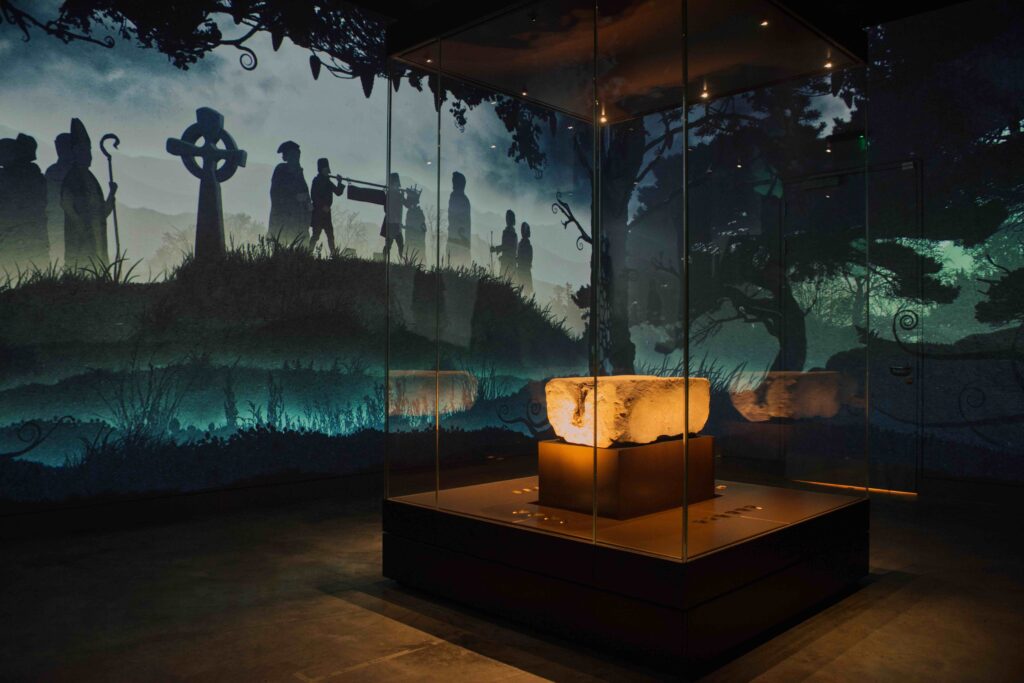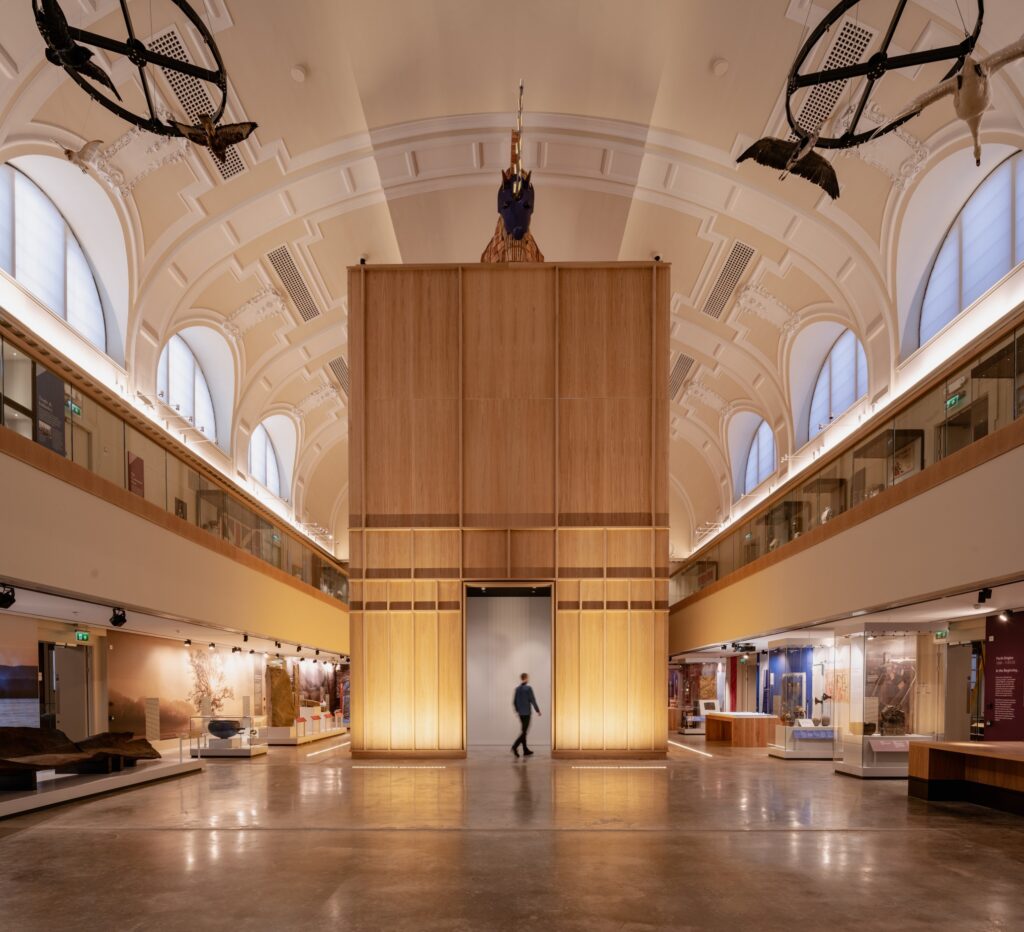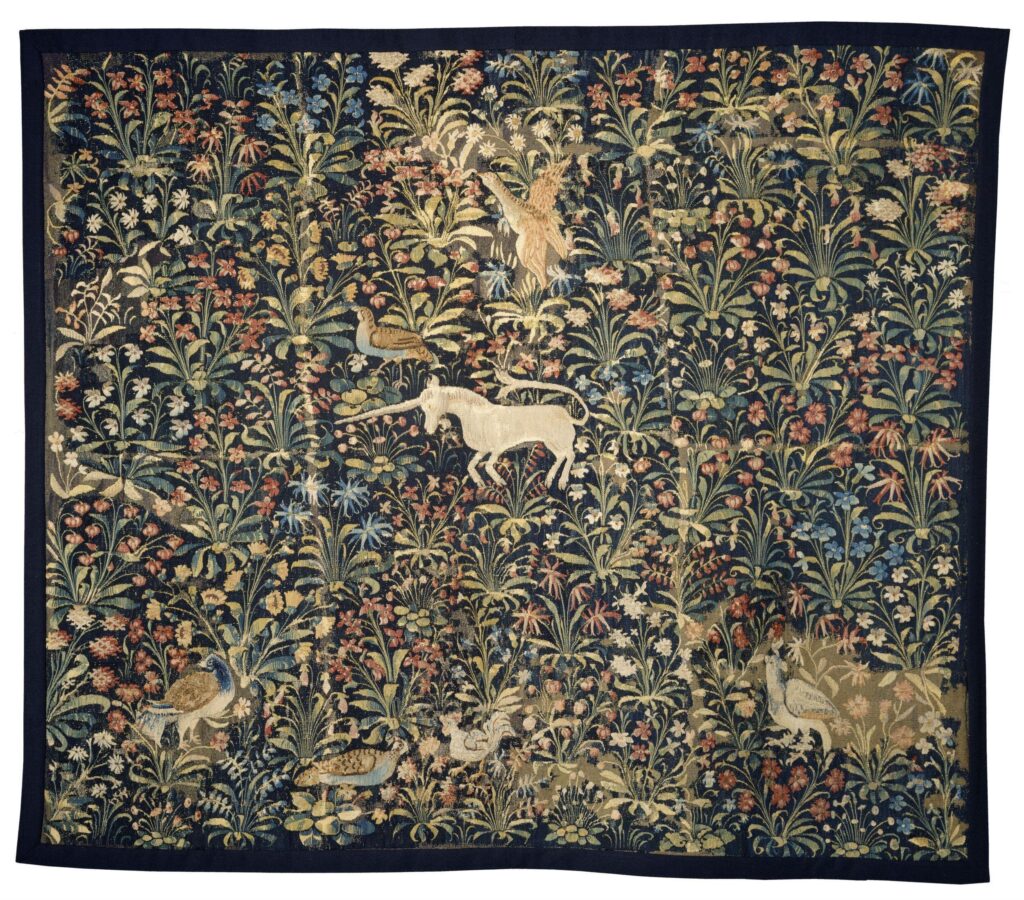Enjoy this article?
Most Museums Journal content is only available to members. Join the MA to get full access to the latest thinking and trends from across the sector, case studies and best practice advice.
Perth Museum, housed in the former Perth City Hall in the city’s centre, continues the venue’s history of being at the heart of social, civil and political life in the area.
The new museum opened to the public on 30 March, after an eight-year, £27m redevelopment to transform the former city hall into the home of Perth’s collection of nearly 480,000 objects.
With no standalone museum in the city before the redevelopment, there was a unique opportunity to create Perth Museum from scratch. During the opening week, I visited to see if the self-proclaimed “Home of Destiny” lived up to expectations.
Displayed at the heart of the museum is the Stone of Destiny, also known as the Stone of Scone. Returned to Perth after 700 years, the stone is an ancient symbol of the Scottish kingdom, once used in the inauguration of Scottish monarchs at the nearby town of Scone.
The first documented use of the stone is 1249, when it was used at the coronation of the Scottish boy-king, Alexander III. It was taken as war loot by Edward I of England just 50 years later and resided at Westminster Abbey in London until 1996 when it was taken to Edinburgh Castle. It was temporarily returned to Westminster Abbey for use at the coronation of King Charles III in May 2023.
After so many centuries being away from its origins, it is no wonder the stone is at the heart of the museum, with large numbers of visitors anticipated.

The stone is housed in a large wooden structure, and visitors can book free timeslots to see it and learn about its history. Small groups of people can enter for the 10-minute show, which begins by telling the history of the stone. A door then opens, inviting visitors to continue their journey to view it in its new home.
The Stone of Destiny display is immersive, with animation and sound creating an atmosphere of wonder as you walk around. However, while it is fascinating to see the stone in person and to be immersed in its history, the experience may feel lacking for some visitors.
The decision to house the stone in a large glass display case creates a physical distance and impacts the visibility of the written information and animation that is shown on the walls. During our visit, I noticed that everyone in the group needed to physically turn to follow the story across the walls and to see past the display case. Unlike the first room, the words on the walls are not read out, which could prove difficult for visitors who do not speak English as a first language, have impaired vision or struggle with reading.
On leaving the Stone of Destiny, I was transported back into the medieval gallery and its mixture of old and new objects, such as the model of the Perth and Kinross area that shows how the area has changed.
The museum has two floors of thematic, chronological displays, starting with pre-historic times and ending with modern-day Perth. Another gallery displays some of the locally beloved natural history collections that had been displayed in the former museum. Local artists and community groups have contributed to the new museum through commissioned pieces and tapestries in other galleries on the ground and first floor. There is a gallery space to suit every visitor.

Perth Museum does not shy away from more challenging narratives and uses its position to educate on crucial subjects, such as slavery. One of the “star objects” on display is a photograph taken about 1865 by Perth photographer Magnus Jackson, which depicts the army major general John MacDuff and his slave, Julius Caesar. While the photo originally refers to Caesar as “his servant”, new research has revealed more about his life and this has been included as part of Perth’s connections to slavery.
The museum also exhibits human remains, which are displayed in side galleries accompanied by digital interactives that invite visitors to read more about the person whose remains are on display. Technology is also used to produce images that are believed to resemble what the person may have looked like and thus re-humanise them. To me, this feels like a long-overdue practice.
Through careful research, Perth Museum successfully meets its goal of sharing underrepresented stories in a way that is accessible to diverse audiences.
While there are many engaging elements to the redevelopment, there are some curatorial decisions that perhaps need to be considered further in accessibility terms.
Inconsistent font sizes on labels and difficult-to-read orange and brown colours undermine the generally successful colour-coded system in the gallery spaces. Despite the labels being informative and well-written, I found the colours sometimes impacted my ability to read them.
The digital interactives used throughout the gallery spaces were often located in tight spaces, particularly in the outer rooms, which could prove challenging for people with sensory sensitivities or in wheelchairs.
But many of these issues are, in the grand scheme of the museum, minor when compared with the successes.
The final destination of our visit was to see the museum’s first special exhibition, Unicorn (until 22 September), which explores the significance of Scotland’s mythical national animal by weaving a story about its cultural, political and social role. From antiquity to the present day, Unicorn takes visitors from its origins as a mythical creature, to a national and cultural symbol.
There is also a display of seven newly commissioned artworks that showcase the unicorn as a modern symbol of the LGBTQ+ community.
Like the rest of the museum, the variety of different thematic approaches to showcasing the unicorn as a significant historic and modern symbol within Scotland is likely to appeal to a diverse audience.

Perth Museum is an excellent example of a modern local museum. It tells the story of the area, situating it within wider national and international contexts, and continues the legacy of its site as a hub for local storytelling and inviting the world to learn more about Perth and Kinross. Its involvement of local groups to assist in storytelling and the display of key objects showcases the level of community care I would expect in a modern redevelopment.
As I delved deeper into the museum, hearing the anecdotes from locals visiting with young children during the holidays and adults sharing memories connected to the collections, it was clear that this museum sparks conversation, a sense of familiarity and new curiosity.
It is rare to find a museum that has something for everyone, and for the people of Perth it is a wonderful opportunity to share their story with the world while reopening the doors to one of the area’s key landmarks.
The redevelopment is a triumph, with minor areas to develop over time, and one I look forward to revisiting.
Aimee Fletcher is a PhD researcher at the University of Glasgow, looking at how to make museums more accessible
Most Museums Journal content is only available to members. Join the MA to get full access to the latest thinking and trends from across the sector, case studies and best practice advice.